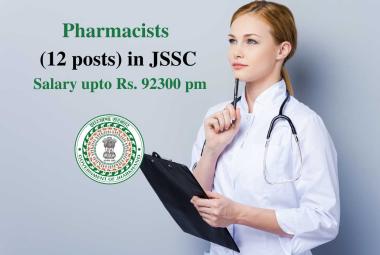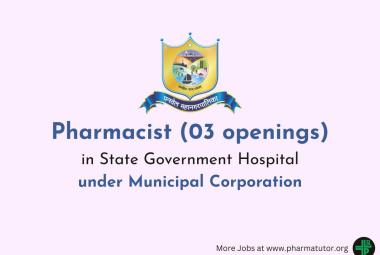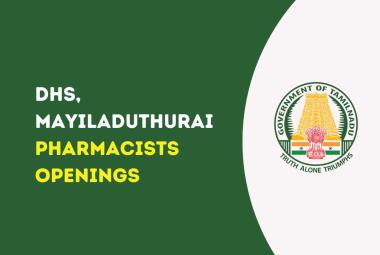{ DOWNLOAD AS PDF }
 ABOUT AUTHORS
ABOUT AUTHORS
DEEPANSHU GUPTA *, CHANDRAKANTA KUSHWAH , ANKUR JOSHI , SAPNA MALVIYA & ANIL KHARIA
Department of pharmacy
Modern institute of Pharmaceutical Sciences, (Shri Prabhat Chandra Kharia Research and Educational Society)
Indore, M.P, India
*guptadeepanshu252@gmail.com
ABSTRACT
This current research was done to bring out the anti-anemic activity in hydro-alcoholic extract of fruit of Allium tricoccum in phenylhydrazine induced anemic rats. The anemia was induced by the administration of Phenylhydrazine (60mg/kg) intraperitoneally in rats for two days. The animals were divided into 5 groups containing 6 animals each. 1st group was served as normal control group, 2nd group was served as anemic control, 3rd group was served as standard reference control administered with Vit. B12 complex, 4th group was served as test control-I administered with 100mg/kg of hydro-alcoholic extract of fruit of Allium tricoccum and 5th group was served as test control-II administered with 200mg/kg of hydro-alcoholic extract of fruit of Allium tricoccum. All the test drugs were given for 28 days daily through oral route. On 29th day blood was withdrawn, through tail puncture and subjected to the estimation of RBC, Hb and percentage Haematocrit. Both the hydro-alcoholic fruit extract of Allium tricoccum and Vit. B12 significantly increase the Haemoglobin, Red Blood Cells & percentage Haematocrit level which conclude that Allium tricoccum fruit exhibits’ the anti-anemic activity.
[adsense:336x280:8701650588]
Reference Id: PHARMATUTOR-ART-2593
|
PharmaTutor (Print-ISSN: 2394 - 6679; e-ISSN: 2347 - 7881) Volume 6, Issue 7 Received On: 08/05/2018; Accepted On: 29/05/2018; Published On: 01/07/2018 How to cite this article: Gupta, D., Kushwah, C., Joshi, A., Malviya, S. and Kharia, A. 2018. Anti-Anemic Activity of Hydro-Alcoholic Extract of Fruit of Allium tricoccum in Phenylhydrazine Induced Anemic Rats. PharmaTutor. 6, 7 (Jun. 2018), 5-7. DOI:https://doi.org/10.29161/PT.v6.i7.2018.5 |
INTRODUCTION
Iron deficiency is the most common nutritional disorder in which there is a depleted and a restricted supply of iron to various tissues which becomes apparent. Anemia is a condition that develops when blood lacks enough healthy red blood cells or haemoglobin. According to WHO anemia affects the lives of more than 2 billion people globally, accounting for over 30% of the world’s population which is the most common public health problem particularly in developing countries occurring at all stages of the life Cycle. Iron deficiency is the most common nutritional disorder in which there is a depleted and a restricted supply of iron to various tissues which becomes apparent. This may result in depletion of Hemoglobin and iron-dependent intra- cellular enzymes participating in many metabolic pathways. Therefore, there is the need for proper management of micronutrient deficiencies most especially irons deficiency. Over the years, medicinal plants have been recognized to be of great importance to the health of individuals and communities. In many developing countries, herbal medicines are assuming greater importance in primary health care. In the present study, the goal was to evaluate the anti-anemic activity of fruit of Allium tricoccum against phenyl hydrazine induced anemic rats (Mohan, 2005; http://www.who.int/topics/anaemia/en/ cited: 25-08-2017; Tortora, 2015).
MATERIALS & METHODS
Plant profile
Table 1 - Plant profile
|
Plant taken |
Spring onion |
|
Part used |
Fruits |
|
Kingdom |
Plantae |
|
Order |
Asparagales |
|
Genus |
Allium |
|
Species |
A. tricoccum |
|
Family |
Amaryllidaceae |
|
Origin |
North America |
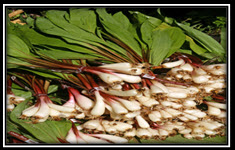
Fig. I - Fruit of Allium tricoccum
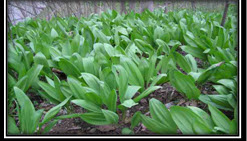
Fig. II - Plant of Allium tricoccum

Fig. III - Soxhlet apparatus
Preparation of extract
The fruits were collected, shade dried and then converted into coarse powder. The powder was then filled in a Soxhlet apparatus for extraction by 70:30 hydro-alcoholic as a solvent. The Hydro-alcoholic extract was concentrated by vacuum distillation to dry. The collected extract was stored in suitable container and used for further pharmacological studies (Khandelwal 2013).
Animals
Wistar strain male albino rats, weighing 100–150 g were selected for the study. The animals were housed individually in polypropylene cages under hygienic and standard environmental conditions (22 ± 3°C, humidity 30–70%, 12 h light/dark cycle). The animals were allowed to have stan¬dard feed and water adlibtum. They were acclimated to the environment for one week prior to experimental use. All the animal testing were done under the approval of Institutional Animal Ethical Committee (IAEC) of Modern Institute of Pharmaceutical Sciences, Indore the approval no. is IAEC/MIPS/01/2017/01 (Hussain et al, 2017).
Anti-anemic activity
Anemia was induced by intra peritoneal injection of phenyl hydrazine at 60 mg/kg for 2 days,
Following the injections, rats were divided into five groups of six rats each.
Group I-Control rats received 0.1% Carboxy methyl cellulose.
Group II-Phenyl hydrazine treated rats (60 mg/kg per day for 2 days).
Group III-Phenyl hydrazine treated rats with Vitamin B12 per day for 28 days.
Group IV-Phenyl hydrazine treated rats with a single dose of fruit extract of Allium tricoccum (100 mg/kg) per day for 28 days.
Group V-Phenyl hydrazine treated rats with a single dose of fruit extract of Allium tricoccum (200 mg/kg) per day for 28 days.
On 29th day, the blood was collected in EDTA coated tube under by tail puncture under phenobarbitone (45mg/kg, ip) anaesthesia. The estimation of various biochemical parameters like Haemoglobin, RBC and percentage Haematocrit were evaluated.
Statistical Analysis
Data’s were expressed as mean ± SEM. The data were analysed by using one way analysis of variance (ANOVA) followed by Dunnet’s ‘t’ test. P values < 0.05 were considered as significant (Joshi Ankur et al, 2017; Joshi Ankur et al, 2017, Gupta Deepanshu et al, 2018).
NOW YOU CAN ALSO PUBLISH YOUR ARTICLE ONLINE.
SUBMIT YOUR ARTICLE/PROJECT AT editor-in-chief@pharmatutor.org
Subscribe to Pharmatutor Alerts by Email
FIND OUT MORE ARTICLES AT OUR DATABASE
RESULTS
Table 2 - Effect of Fruits of Allium tricoccum on haemoglobin, RBC and percentage haematocrit.
|
S. No |
Drug Treatment |
RBC (106 µL-1) |
Hb (g dL-1) |
HCT % |
|
1. |
Normal Control (0.1% CMC) |
8.81±0.65 |
13.72±0.65 |
48.78 |
|
2. |
Anemic Control Phenylhydrazine (60mg/kg) |
4.71±0.14 |
6.42±0.22 |
27.44 |
|
3. |
Reference control Vit. B12 |
8.34±0.42*** |
13.19±0.73*** |
47.33** |
|
4. |
Test Control – I Allium tricoccum (100 mg/kg) |
8.32±0.51*** |
13.24±0.70*** |
46.57** |
|
5. |
Test Control - II Allium tricoccum (200 mg/kg) |
8.53±0.34*** |
13.41±0.62*** |
49.82** |
Data were expressed as Mean ± SEM (n=6)
*P<0.05, ** P<0.01 and *** P<0.001 vs. Anemic Control
The hydro-alcoholic extract of fruit of Allium tricoccum showed the presence of alkaloids, flavonoid, iron, saponins, carbohydrates, amino acids, glycoside, proteins and fixed oil & fats. Anti-anemic activity of Allium tricoccum fruit extract on Phenylhydrazine induced haemolytic anemia in rats was studied and the results were shown on table 2. The anti-anemic activity of Allium tricoccum fruit extract was assessed by determining the red blood cell count, haemoglobin and haematocrit percentage. Phenylhydrazine decreased the RBC, Hb and % HCT as compared with normal control. There was significant (P<0.001) increase in RBC and Hb with both Vitamin B12 and Allium tricoccum fruit extract against phenylhydrazine provocation. Also there was significant (P<0.01) increase in % HCT with both Vitamin B12 and Allium tricoccum fruit extract. This shows that Allium tricoccum fruit have anti anemic activity against phenylhydrazine induced haemolytic anemia in rats and it has comparable effect as that of the standard drug Vitamin B12.
CONCLUSION
It has been concluded that the Hydro-alcoholic fruit extract of Allium tricoccum exhibits anti-anemic activity against phenylhydrazine induced anemia in rats. The anti-anemic effect produced by the Allium tricoccum fruit may be due to its high content of iron which is present in the plant.
IRON 1.22 mg (9 %) per 100 g
REFERENCES
1. Gupta Deepanshu, et al. April-June 2018 “Anti-anemic activity of hydro-alcoholic leaf extract of brassica oleracea var in phenylhydrazine induced anemic rats”, Asian Journal of Pharmaceutical Education and Research, Vol -7, Issue-2.
2. http://www.who.int/topics/anaemia/en/ cited: 25-08-2017.
3. Hussain Aafreen, et al, 2017 “Anti-anemic Activity of Seeds of Trigonella Foenum-graecum in Male Albino Rats”, J Pharm Biomed Sci | Vol. 06 No. 11| 608–612.
4. Joshi Ankur, et al, 04, April, 2017 “Anti-anemic activity of hydro alcoholic leaf extract of Aegle marmelos in phenylhydrazine induced anemic rats”, International Journal of Current Research, Vol. 9..
5. Joshi Ankur, et al, 2017 “Anti-anemic activity of hydro alcoholic leaf extract of Tamarindus Indica in phenylhydrazine induced anemic rats”, journal of harmonized research in applied sciences, 5(3), 132-135.
6. Khandelwal K.R., 2013 “Practical Pharmacognosy”, 22nd ed., Pune, Nirali prakashan, , 149-156.
7. Mohan Harsh, 2005 “Textbook of pathology”, 5th edition, New Delhi, Jaypee Brothers, Medical publishers (p) ltd., 133.
8. Tortora J. Gerard, Derrickson Bryan, 2015 “Anatomy & physiology”, 13th ed., Indian edition, New Delhi, Wiley India pvt. Ltd., 603-623.
NOW YOU CAN ALSO PUBLISH YOUR ARTICLE ONLINE.
SUBMIT YOUR ARTICLE/PROJECT AT editor-in-chief@pharmatutor.org
Subscribe to Pharmatutor Alerts by Email
FIND OUT MORE ARTICLES AT OUR DATABASE



